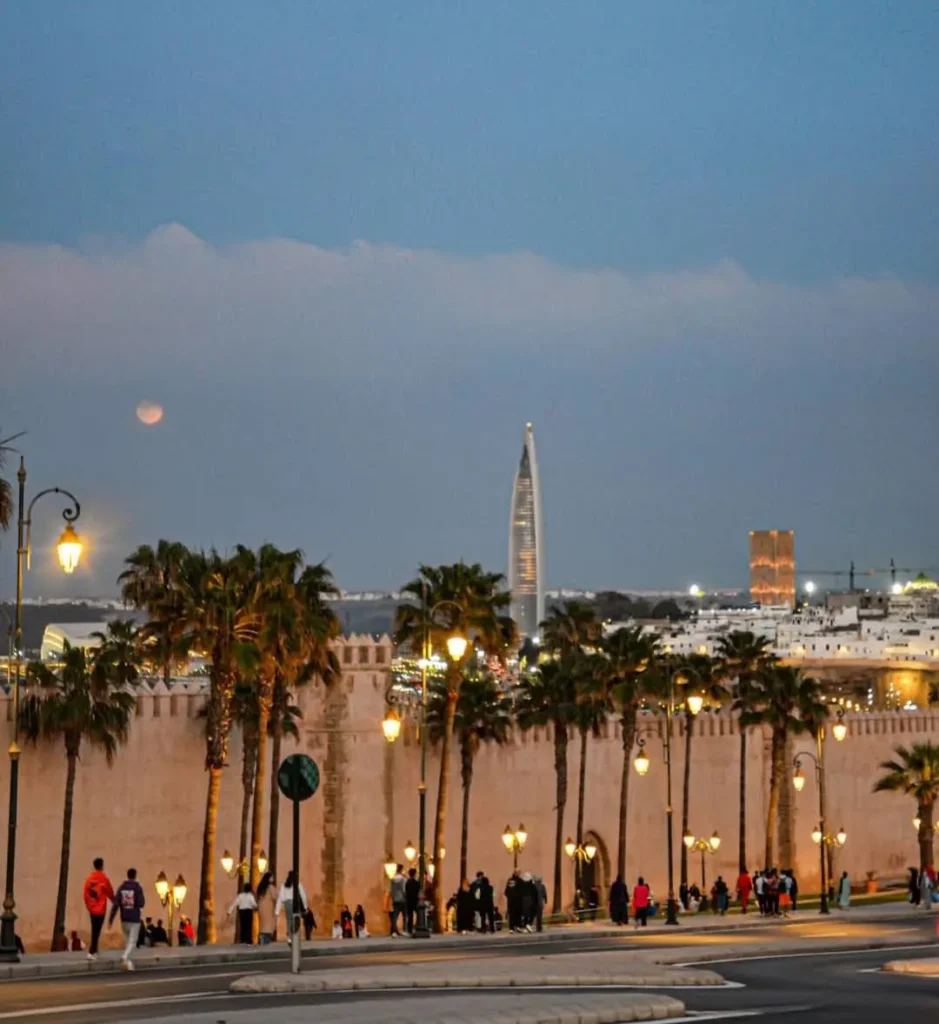Rabat, the capital city of Morocco, is a fascinating blend of history, culture, and modern life. Located on the Atlantic coast and bordered by the Bouregreg River, Rabat is one of Morocco’s imperial cities and a UNESCO World Heritage Site. Unlike the hustle and bustle of Marrakech or Casablanca, Rabat offers a calmer and more refined atmosphere, making it a perfect destination for travelers seeking both history and serenity.
A Glimpse into Rabat’s History
Rabat’s history stretches back to the 12th century when it was founded by the Almohad dynasty. Under Sultan Abd al-Mu’min, the city was fortified with massive walls and gates that still stand today. Later, in the 17th century, Rabat became a stronghold for the Andalusian refugees expelled from Spain, shaping much of its cultural identity.
In 1912, during the French protectorate, Rabat was declared the capital of Morocco — a status it still holds today. This decision transformed the city into a modern political and administrative hub, while preserving its historic heritage.
Culture and Lifestyle in Rabat
Rabat is a city where tradition and modernity meet:
Arts and Crafts: The city is famous for its traditional weaving, embroidery, and pottery.
Music and Festivals: Rabat hosts the Mawazine Festival, one of the largest music festivals in the world, attracting international artists and showcasing Moroccan talent.
Cuisine: The flavors of Rabat reflect Morocco’s rich culinary tradition, with dishes like couscous, tagines, and fresh Atlantic seafood.
Literature and Education: Rabat is home to Morocco’s main libraries and cultural centers, making it a hub for intellectual and artistic exchange.
Museums and Exhibitions
Rabat offers a wide range of cultural experiences through its museums and exhibitions:
Mohammed VI Museum of Modern and Contemporary Art – Showcasing both Moroccan and international artists.
The Archaeological Museum – Featuring artifacts that trace Morocco’s ancient civilizations.
The Royal Palace and Gardens – A symbol of Morocco’s monarchy, surrounded by beautiful landscapes.
Art Galleries – Throughout the city, private and public galleries host exhibitions that highlight Morocco’s evolving art scene.
The Old Medina of Rabat
The medina of Rabat, a UNESCO World Heritage Site, is less crowded than those of Fez or Marrakech but equally charming. Walking through its narrow alleys, you’ll find:
Colorful souks selling carpets, spices, leather goods, and handicrafts.
Traditional riads converted into guesthouses and cafés.
Historic sites such as the Kasbah of the Udayas, with its white-and-blue painted houses and stunning ocean views.
Nature and Green Spaces
Rabat is not only a city of history and culture but also a city of nature:
The Bouregreg River – Perfect for boat rides and riverside walks.
Andalusian Gardens – A peaceful retreat filled with flowers, fountains, and shaded paths.
Beaches – The Atlantic coastline near Rabat offers sandy beaches ideal for relaxation and surfing.
Urban Parks – Rabat is one of Morocco’s greenest cities, with plenty of gardens and open spaces.
Why Visit Rabat?
To explore Morocco’s imperial history and UNESCO World Heritage sites.
To enjoy a vibrant mix of culture, festivals, and art.
To wander through the calm and authentic old Medina.
To relax in beautiful natural surroundings along the river and coast.
—
Conclusion
Rabat is more than just Morocco’s political capital — it is a city where history, culture, and nature coexist harmoniously. From the ancient Kasbah of the Udayas to the modern art museums, from the bustling old Medina to the peaceful Andalusian gardens, Rabat offers a unique travel experience.
Whether you are an art lover, a history enthusiast, or simply looking for a relaxing getaway, Rabat will surprise you with its elegance and authenticity.

